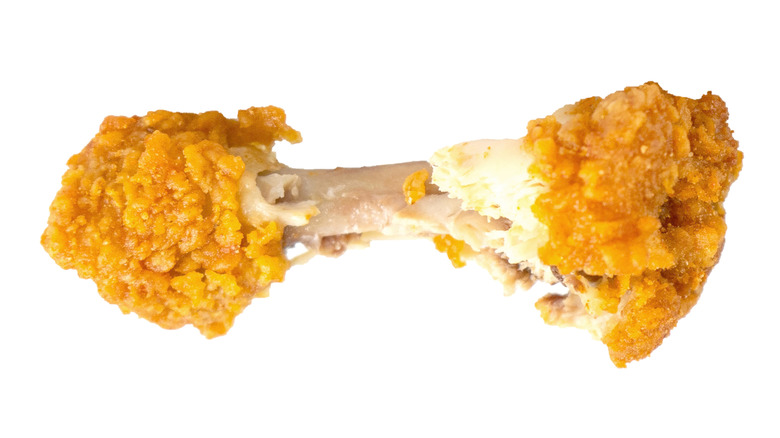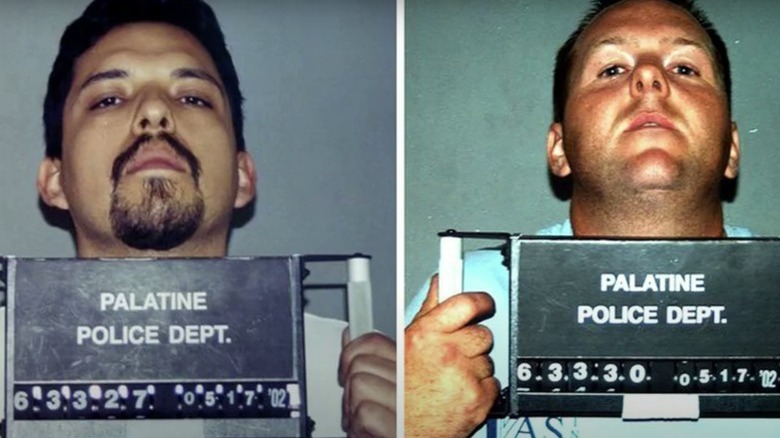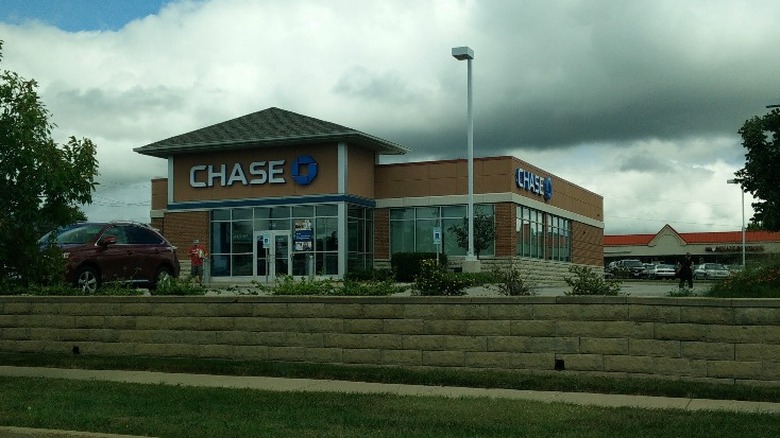Inside The Brown's Chicken Massacre
Brown's Chicken has been one of the most popular fast-food chicken restaurants in and around Chicago, Illinois, since the late 1940s. As stated on the company website, Brown's Chicken has used the same, beloved recipe for more than 70 years. By 1993, Seattle Times reports, the company grew to include nearly 300 restaurants in 13 states. Despite the fact that a vast majority of those locations are now closed, 21 locations are still going strong throughout the Chicagoland region. Although Brown's is best known for their fried chicken, and the slogan, "It Tastes Better," it is also known for a mass murder which occurred at one of the locations and went unsolved for nearly nine years.
On the evening of January 8, 1993, the employees at the Brown's Chicken in Palatine, Illinois, were cleaning up and getting ready to close the restaurant for the night when two men walked in and placed an order which they planned to eat at the restaurant. As reported by The Bad Influence, the men finished their meal, but they were not ready to leave. Instead, they threw out their trash, put latex gloves on their hands, and proceeded to kill everyone in the building. According to The Bad Influence, one of the men shot a gun into the air and told everyone to get on the ground. The other escorted employee Rico Solis, who had been sweeping the dining room, to the back of the store.
Seven people were killed in the Brown's Chicken massacre
The Bad Influence reports another employee attempted to flee. However, he was caught before he could make it out of the restaurant, and taken into the back with Solis and the others. One of the men then threatened franchise co-owner Lynn Ehlenfeldt with a knife, and forced her to give him the contents of the safe, which was nearly $2,000. He then slashed her throat and placed her body in a walk-in cooler. As reported by NBC5 Chicago, the man shot and killed four other employees who were already inside the cooler. His accomplice then shot the two remaining employees, who were inside the restaurant's walk-in freezer.
A total of seven people were killed in the Brown's Chicken massacre, including franchise owners Richard and Lynn Ehlenfeldt, as well as employees Michael Castro, Guadalupe Maldonado, Thomas Mennes, Marcus Nellsen, and Rico Solis. According to The Bad Influence, the youngest victims were Castro, who was 16, and Solis, who was 17. Both teens were students at Palatine High School and worked part-time at the restaurant.
Authorities were alerted to the situation by several calls reporting friends and family members had not returned home following their shift at Brown's Chicken. Police arrived on the scene at approximately 3 a.m. and found the door to the employee entrance unlocked and several cars in the parking lot. When they went inside, they discovered the victims dead inside the cooler and freezer.
The Brown's Chicken massacre went unsolved for nearly nine years
Authorities found several clues at the scene which they hoped would help them identify the person or persons who committed the mass murder and robbery. As reported by The Bad Influence, detectives found a receipt, which was time stamped at 9:08 p.m. The order was for a four-piece chicken meal that included coleslaw, fries, and a small drink. They also found the remnants of that same meal in an otherwise empty trash can inside the restaurant. Although DNA technology was not available at the time, the contents of the trash can were collected and preserved by the detectives, and would eventually become an integral part of solving the case. Unfortunately, it would take nearly a decade to get to that point.
By January 14, 1993, Daily Herald reports, more than 60 detectives from numerous law enforcement agencies were working on the case and following more than 1,100 leads. Although six different men were arrested between January 1993 and April 1994 on suspicion of involvement, they were all eventually cleared of taking part in the murders and robbery. Multiple task forces worked toward solving the Brown's Chicken massacre. However, it remained unsolved until authorities received a valuable tip on March 25, 2002. As reported by Daily Herald, Anne Lockett claimed her former boyfriend and a friend of his had admitted to committing the murders shortly after they occurred.
DNA from partially eaten chicken finally led to an arrest
The men Anne Lockett named were her former boyfriend, James Degorski and his friend, Juan Luna. The Bad Influence reports Lockett said she did not come forward sooner, as she feared for her life. According to Patch, she also revealed Degorski told her he dumped the gun used in the murders in the Fox River. As reported by NBC5 Chicago, another woman, Eileen Bakalla, said James Degorski also confessed to her that he was involved in the Brown's Chicken massacre. Bakalla said Degorski told her Juan Luna was the mastermind behind the murders and robbery. However, Degorski confessed that he did kill two of the victims himself.
According to Bakalla, Degorski told her, "Juan had a knife, and that he used that knife to slit the lady owner's throat ear to ear ... they herded the rest of the people to the cooler, where Juan shot four of them ... Juan then handed the gun to [Degorski] and told him to shoot the other people in the freezer. He said he went to the freezer and shot the other two people." Authorities also discovered Luna previously worked at the Brown's Chicken location where the massacre occurred, but he had been fired. Daily Herald reports the witness statements prompted authorities to send the evidence collected from the trash can in 1993 for DNA testing. According to The Bad Influence, saliva found on the chicken bones was a match for Luna.
Juan Luna and James Degorski were convicted of murder and sentenced to life in prison
As he had worked at the restaurant, The Bad Influence reports, Juan Luna (above, left) knew the location of the safe. He also knew there were no panic alarms in the store and that the owners did not keep any weapons on site. Although he initially confessed to the crime, and implicated his high school friend James Degorski (above, right) as his accomplice, Luna pleaded not guilty at trial. Daily Herald reports Degorski also pleaded not guilty. However, both men were convicted of murder and sentenced to life in prison without the possibility of parole.
The Palatine location of Brown's Chicken never reopened after the massacre. The building was used for a dry cleaning service and then an Italian restaurant. However, neither business was profitable and they both eventually closed. As reported by Robert Loerzel, the building was demolished on April 28, 2001. The site was initially paved over and converted into a parking lot. According to The Bad Influence, a new building was eventually erected, and a Chase bank branch office now stands at the former site of Brown's Chicken.
The Brown's Chicken massacre had a negative impact on the entire company
The massacre had a heavy impact on sales at all Brown's Chicken locations. Company-wide sales declined more than 30% in the years following the incident. According to Washington Times, the company was urged to change its name in an effort to separate Brown's Chicken from the tragedy. However, owner Frank Portillo Jr. wanted to keep the name in honor of John Brown, who helped him start the company and died less than one month before the massacre occurred. Although the location where the massacre occurred was closed, the company opened another location in Palatine. As reported by Washington Times, the new location was built at the intersection of Northwest Highway and Hicks Road.
The Brown's Chicken massacre ultimately led to the closure of nearly 280 franchise locations between 1993 and the present day, due to the loss of revenue. Washington Times reports an estimated 3,000 employees lost their jobs amid the closures and the company was forced to file bankruptcy in 2009. In 2010, the company was purchased by Pop-Grip LLC. Although the massacre remains part of the chicken restaurant's history, Brown's Chicken has managed to maintain enough loyal customers to continue operations. However, according to the Washington Times, sales have been on the decline.





